lipicure (ATORVASTATIN)
Introduction to Lipicure
Lipicure is a medication primarily used to manage cholesterol levels in the body. It is a brand name for the drug Atorvastatin, which belongs to a class of drugs known as stati... See More

What is Lipicure?
Lipicure is a medication that belongs to the class of drugs called statins. It works by reducing the production of cholesterol in the liver. Lipicure is primarily used to lower high cholesterol and triglyceride levels in the blood, which helps reduce the risk of heart disease and stroke. It is often used alongside a healthy diet and exercise. Lipicure may also be prescribed to prevent heart problems in people with risk factors like diabetes or high blood pressure.

What is the usual dose of Lipicure?
The usual starting dose of Lipicure for adults is 10 mg once daily. Your doctor may adjust the dose based on your cholesterol levels and response to the medication. The maximum recommended dose is 80 mg daily. For children or the elderly, dose adjustments may be necessary. Always follow your doctor's specific dosing instructions to ensure the medication is effective and safe for your health needs.

How do I take Lipicure?
Take Lipicure once daily, preferably in the evening, with or without food. Swallow the tablet whole; do not crush it. If you miss a dose, take it as soon as you remember unless it's almost time for your next dose. In that case, skip the missed dose and continue with your regular schedule. Do not take two doses at once. Avoid drinking large amounts of grapefruit juice while on Lipicure, as it can increase the risk of side effects. Always follow your doctor's specific instructions.

For how long do I take Lipicure?
Lipicure is usually a long-term medication for managing cholesterol levels. You'll typically take it every day as a lifelong treatment unless your doctor suggests otherwise. Stopping this medication without medical advice could cause your cholesterol levels to rise, increasing the risk of heart disease. How long you'll need this medication depends on your body's response and any side effects you experience. Always talk with your doctor before changing or stopping your Lipicure treatment.

What disease or symptom is Lipicure used for?
Lipicure is used to treat high cholesterol and triglyceride levels, which are fats in the blood. It helps reduce the risk of heart disease and stroke by lowering "bad" LDL cholesterol and triglycerides while increasing "good" HDL cholesterol. Lipicure is also used to prevent heart problems in people with risk factors like diabetes, high blood pressure, or a family history of heart disease. It is often used alongside a healthy diet and exercise to improve overall heart health.

How long does it take for Lipicure to start working?
Lipicure starts working within a few days, but it may take up to two weeks to see significant changes in cholesterol levels. The full therapeutic effect is usually achieved within four to six weeks. Individual factors like diet, exercise, and overall health can affect how quickly Lipicure works. Regular blood tests will help monitor your cholesterol levels and determine the medication's effectiveness. Always take Lipicure as prescribed for the best results.

Is Lipicure effective?
Lipicure is effective in lowering cholesterol levels and reducing the risk of heart disease. It works by blocking an enzyme in the liver that produces cholesterol. Clinical studies show Lipicure significantly lowers LDL cholesterol, which is the "bad" cholesterol, and reduces the risk of heart attacks and strokes. It is widely used and supported by evidence for its effectiveness in managing cholesterol-related conditions.

How do I know if Lipicure is working?
Lipicure is used to lower cholesterol levels. You'll know it's working when your blood tests show reduced LDL cholesterol, which is the "bad" cholesterol. You might not notice physical changes, but regular check-ups with your doctor will monitor your cholesterol levels. Your doctor may adjust your treatment based on these test results to ensure the medication is effectively managing your condition.

How does Lipicure work?
Lipicure works by blocking an enzyme in the liver called HMG-CoA reductase, which is responsible for producing cholesterol. Think of it like turning down the volume on a radio. By reducing cholesterol production, Lipicure lowers the levels of "bad" LDL cholesterol and triglycerides in the blood. This helps prevent the buildup of cholesterol in the arteries, reducing the risk of heart disease and stroke. The medication also slightly increases "good" HDL cholesterol, which helps remove cholesterol from the bloodstream.

Who should avoid taking Lipicure?
Do not take Lipicure if you have liver disease or are allergic to it. These are absolute contraindications due to severe risks. Use caution if you have a history of liver problems or are pregnant, as these are relative contraindications. Lipicure can harm an unborn baby. Always consult your doctor about your medical history before starting Lipicure to ensure it's safe for you.

Can I take Lipicure with other prescription drugs?
Lipicure can interact with certain medications, increasing the risk of side effects. Major interactions include drugs like cyclosporine and certain antibiotics, which can increase the risk of muscle problems. Moderate interactions include other cholesterol-lowering medications, which may enhance side effects. Always inform your doctor about all medications you take to avoid interactions and ensure your treatment is safe and effective.

Can Lipicure be taken safely while pregnant?
Lipicure is not recommended during pregnancy. It can harm an unborn baby, as it affects cholesterol production, which is important for fetal development. There is limited evidence on its safety in pregnant women, but the risks outweigh the benefits. If you're pregnant or planning to become pregnant, talk with your doctor about safer alternatives to manage your cholesterol during this time.

Can Lipicure be taken safely while breastfeeding?
Lipicure is not recommended while breastfeeding. There is limited information on whether it passes into breast milk, but it could potentially affect a nursing infant. The effects on milk supply are also unknown. If you're breastfeeding and need to manage your cholesterol, talk with your doctor about safer medication options that would allow you to nurse your baby safely.
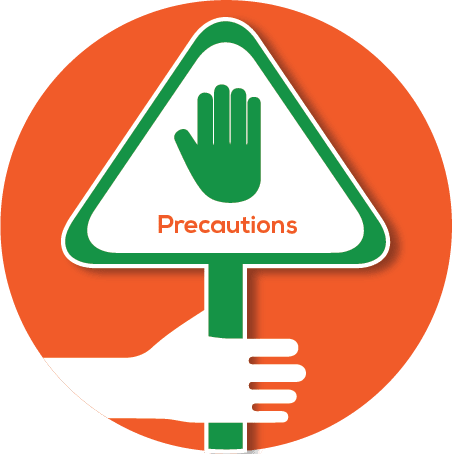
Is Lipicure safe for the elderly?
Lipicure is generally safe for the elderly, but they may be more vulnerable to side effects like muscle pain or liver issues. The elderly often have other health conditions or take multiple medications, increasing the risk of interactions. Regular monitoring by a doctor is important to ensure Lipicure is safe and effective. Dose adjustments may be necessary based on individual health needs.

How should I store Lipicure?
Store Lipicure at room temperature, away from moisture and light. Keep it in a tightly closed container. Do not store it in humid places like bathrooms, as moisture can affect the medication's effectiveness. If your pills came in packaging that isn't child-resistant, transfer them to a container that children can't easily open. Always store Lipicure out of children's reach to prevent accidental swallowing. Check the expiration date regularly and properly dispose of any unused or expired medication.
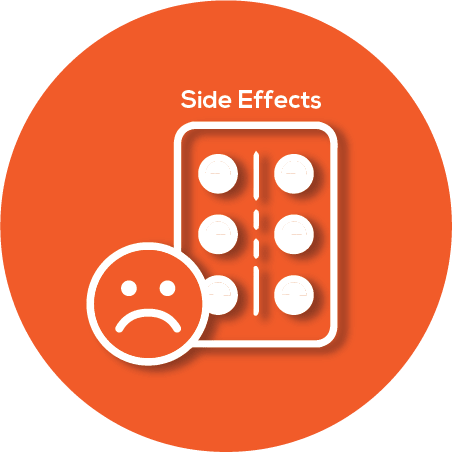
Does Lipicure make people tired or drowsy?
Lipicure doesn't typically cause tiredness or drowsiness. Most people take this medication without feeling unusually fatigued. If you notice you're feeling very tired while taking Lipicure, talk with your doctor. Your tiredness might be caused by something else, like another medication or an underlying health condition. Your doctor can help determine the cause and recommend appropriate adjustments to your treatment plan.

Does Lipicure cause stomach upset?
Lipicure can occasionally cause stomach upset, including nausea, diarrhea, or abdominal pain. These side effects are usually mild. Taking the medication with food might help reduce discomfort. If you experience severe or persistent stomach issues, consult your doctor. They can help determine if Lipicure is the cause and suggest ways to manage these symptoms while continuing your treatment.

Does Lipicure affect sleep?
Lipicure doesn't typically cause sleep problems. Most people take this medication without experiencing changes in their sleep patterns. If you notice changes in how well you sleep after starting Lipicure, talk with your doctor. Sleep problems might be related to something else, like another medication or a different health condition. Your doctor can help figure out the cause and suggest ways to improve your rest while continuing your treatment.

Does Lipicure make it hard to think or concentrate?
Lipicure doesn't typically cause cognitive issues like difficulty concentrating or thinking. Most people take this medication without experiencing changes in mental focus. If you notice problems with your thinking after starting Lipicure, talk with your doctor. These symptoms might be related to something else, such as another health condition. Your doctor can help determine the cause and suggest solutions.

Does Lipicure affect mood?
Lipicure doesn't typically cause mood changes. Most people take this medication without experiencing anxiety or agitation. If you notice changes in your mood after starting Lipicure, talk with your doctor. These symptoms might be related to something else, like stress or another health condition. Your doctor can help determine the cause and suggest appropriate support while continuing your treatment.

Does Lipicure interfere with sexual function?
Lipicure can occasionally interfere with sexual function, causing issues like erectile dysfunction or loss of libido. These side effects are considered rare. If you experience mild or moderate sexual health side effects, talk to your doctor. They can help determine if Lipicure is the cause and suggest ways to manage these effects. It's important to address any concerns with your healthcare provider to ensure your treatment plan is effective and comfortable for you.

Does Lipicure affect appetite?
Lipicure doesn't typically affect appetite. Most people taking this medication don't notice changes in how hungry they feel. If you notice unexpected changes in your appetite after starting Lipicure, talk with your doctor. For mild appetite changes, try maintaining regular meal times and eating a balanced diet. Your doctor can help determine if any appetite changes are related to Lipicure or if there might be another cause.

Does Lipicure cause weight gain?
Lipicure does not typically affect weight. It is not known to cause weight gain or loss. If you notice significant changes in your weight while taking Lipicure, talk with your doctor. They can help determine if the medication is related to these changes or if there might be another cause. Maintaining a balanced diet and regular exercise can support your overall health while on medication.

Does Lipicure cause headaches?
Headaches are an occasional side effect of Lipicure. They are usually mild to moderate in severity. If you experience headaches, staying hydrated and resting may help. Over-the-counter pain relievers can also be used, but check with your doctor first. If headaches persist or become severe, consult your healthcare provider to determine if Lipicure is the cause and to discuss possible solutions.

Does Lipicure limit driving?
Lipicure is unlikely to impair your ability to drive. However, it can occasionally cause dizziness or muscle pain. If you experience these symptoms, avoid driving until they subside. When you first start taking Lipicure, pay attention to how your body responds before getting behind the wheel. If you have concerns about driving while on this medication, discuss them with your doctor.

Is it safe to drink alcohol while taking Lipicure?
It's best to limit alcohol while taking Lipicure. Alcohol can increase the risk of liver damage, which is a concern with Lipicure. Drinking alcohol may also worsen side effects like dizziness. If you choose to drink, do so in moderation and watch for warning signs like unusual fatigue or yellowing of the skin. Talk with your doctor about alcohol use while taking Lipicure for personalized advice.

Is it safe to drink coffee or tea while taking Lipicure?
You can drink coffee and tea while taking Lipicure. There are no known interactions between caffeine and Lipicure. However, both caffeine and Lipicure can cause mild stomach upset in some people. If you experience discomfort, try reducing your caffeine intake. Always ensure you stay hydrated and maintain a balanced diet while on medication. If you have concerns, discuss them with your doctor.

Is it safe to exercise while taking Lipicure?
Yes, it's safe to exercise while taking Lipicure. Regular physical activity can help improve your cholesterol levels and overall heart health. However, Lipicure can cause muscle pain in some people. If you experience muscle pain or weakness during exercise, stop and rest. Consult your doctor if these symptoms persist. They can help determine if Lipicure is the cause and suggest ways to manage your exercise routine safely.

What are the most common side effects of Lipicure?
Side effects are unwanted reactions to a medication. Common side effects of Lipicure include muscle pain, headache, and nausea. These occur in a small percentage of users. If you experience new symptoms after starting Lipicure, they might be temporary or unrelated to the medication. Always talk with your doctor before stopping any medication to ensure your treatment remains effective and safe.

Does Lipicure have adverse effects?
Adverse effects are unwanted reactions to a medication. Common adverse effects of Lipicure include muscle pain, headache, and nausea. These occur in a small percentage of users. Serious side effects, like liver damage or muscle breakdown, are rare but require immediate medical attention. If you notice any new or worsening symptoms, contact your doctor. They can help determine if Lipicure is the cause and adjust your treatment if necessary.

Is Lipicure addictive?
Lipicure is not addictive or habit-forming. It does not cause dependency or withdrawal symptoms. This medication works by lowering cholesterol levels in the blood and does not affect brain chemistry in ways that could lead to addiction. You won't experience cravings for Lipicure or feel compelled to take more than prescribed. If you have concerns about medication dependence, Lipicure does not carry this risk.

Does Lipicure have any safety warnings?
Yes, Lipicure has important safety warnings. It can cause muscle problems, which may lead to serious conditions like rhabdomyolysis, which is muscle breakdown that can damage the kidneys. Liver function should be monitored, as Lipicure can affect liver enzymes. Not adhering to these warnings can lead to severe health issues. Always follow your doctor's advice and report any unusual symptoms immediately.

Is it safe to stop Lipicure?
Lipicure is usually taken long-term to manage cholesterol levels. Stopping it suddenly can lead to increased cholesterol, raising the risk of heart disease. There are no withdrawal symptoms, but your condition may worsen. Always talk with your doctor before stopping Lipicure. They can guide you on how to safely discontinue or adjust your medication to maintain your health.

How do I dispose of Lipicure?
Dispose of unused Lipicure by taking it to a drug take-back program or collection site at a pharmacy or hospital. If that's not possible, you can throw it in the trash at home. First, remove it from its original container, mix it with something undesirable like used coffee grounds, seal it in a plastic bag, and then throw it away. This helps prevent harm to people and the environment.

What are Lipicure possible harms and risks?
A side effect is an unwanted symptom caused by medical treatment. Common side effects of Lipicure include muscle pain, diarrhea, nausea, headache, and joint pain. These side effects are generally mild and may occur in more than 1 in 10 people. It's important to note that new symptoms can appear when starting any new medication, and they might not be related to the medicine or could be temporary. Always consult a healthcare provider before stopping any medication.
Available in 7 variations

Lipicure 10mg Tablet 15s
Lipicure 10mg Tablet 15s
Atorvastatin (10mg)
strip of 15 tablets
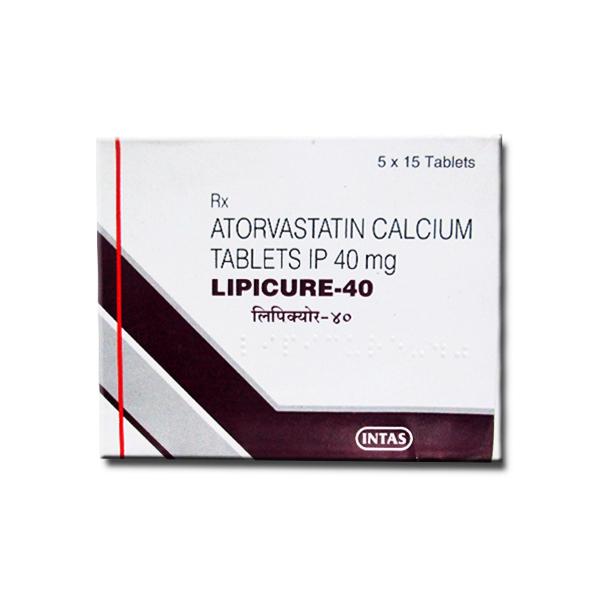
Lipicure 40mg Tablet 15s
Atorvastatin (40mg)
strip of 15 tablets
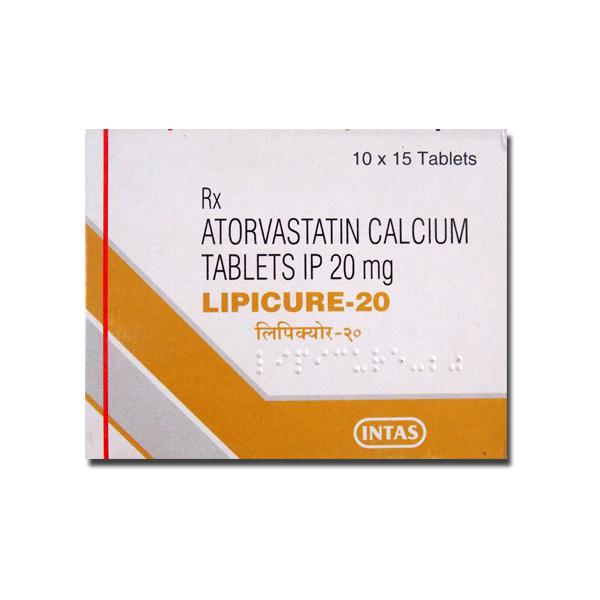
Lipicure 20 Tablet 15s
Atorvastatin (20mg)
strip of 15 tablets
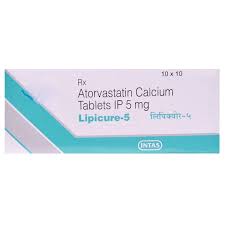
Lipicure 5mg Tablet 10s
Atorvastatin (5mg)
strip of 10 tablet
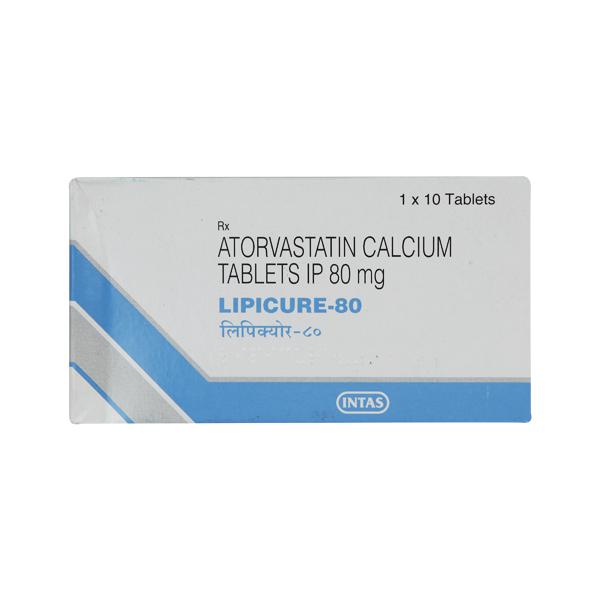
Lipicure 80mg Tablet 10s
Atorvastatin (80mg)
strip of 10 tablet
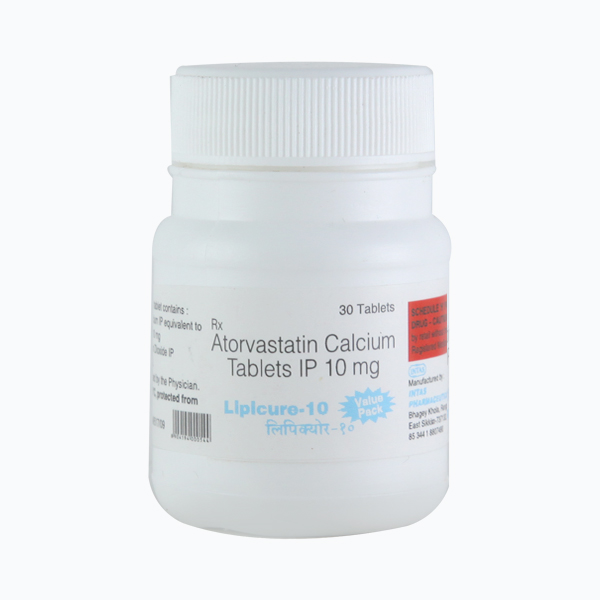
Lipicure 10mg Tablet
Atorvastatin (10mg)
bottle of 30 tablets
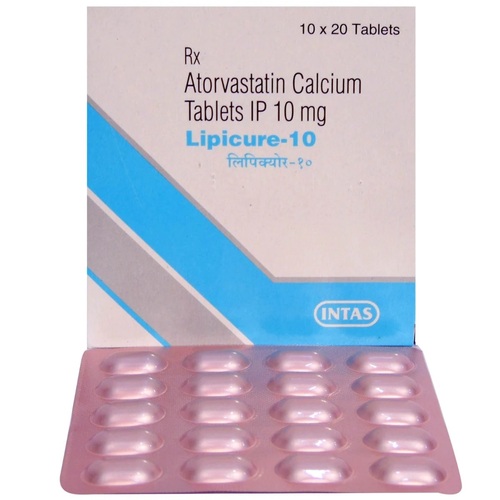
Lipicure 10mg Tablet 20s
Atorvastatin (10mg)
strip of 20 tablets



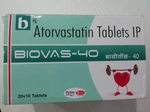





.svg)
